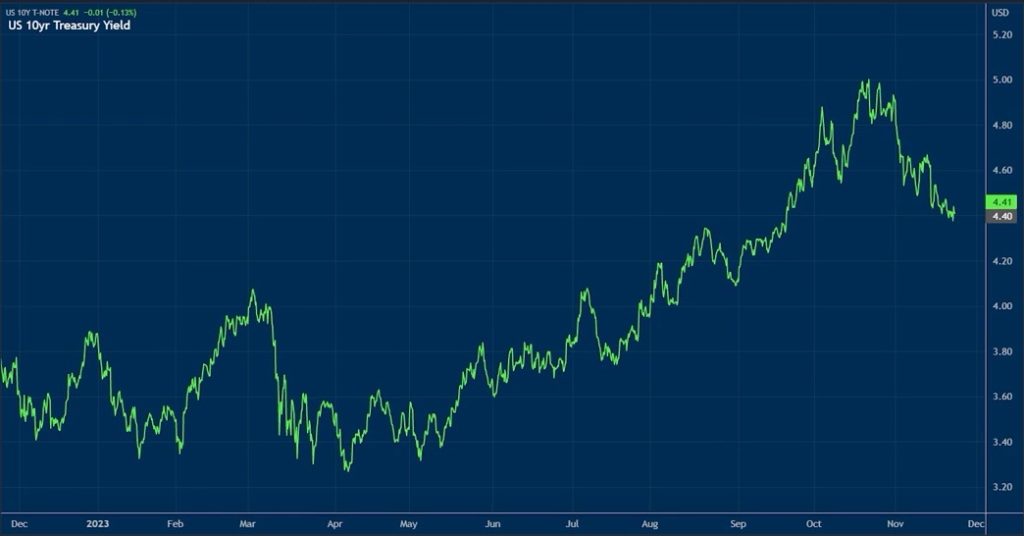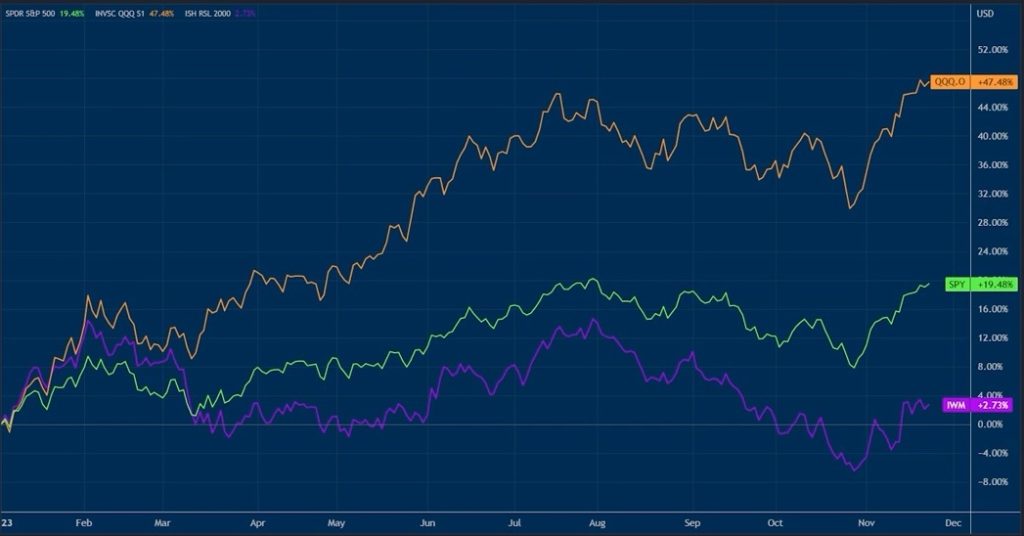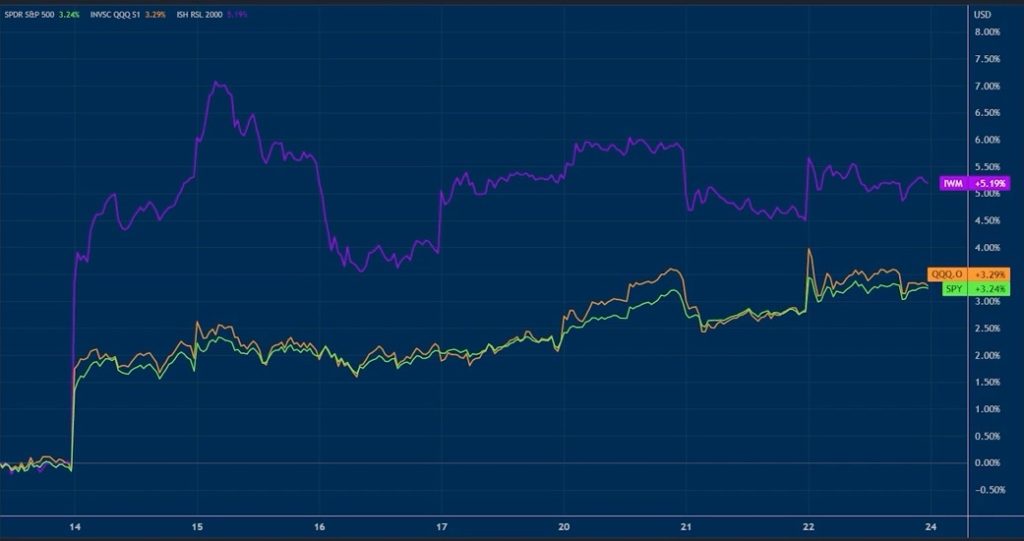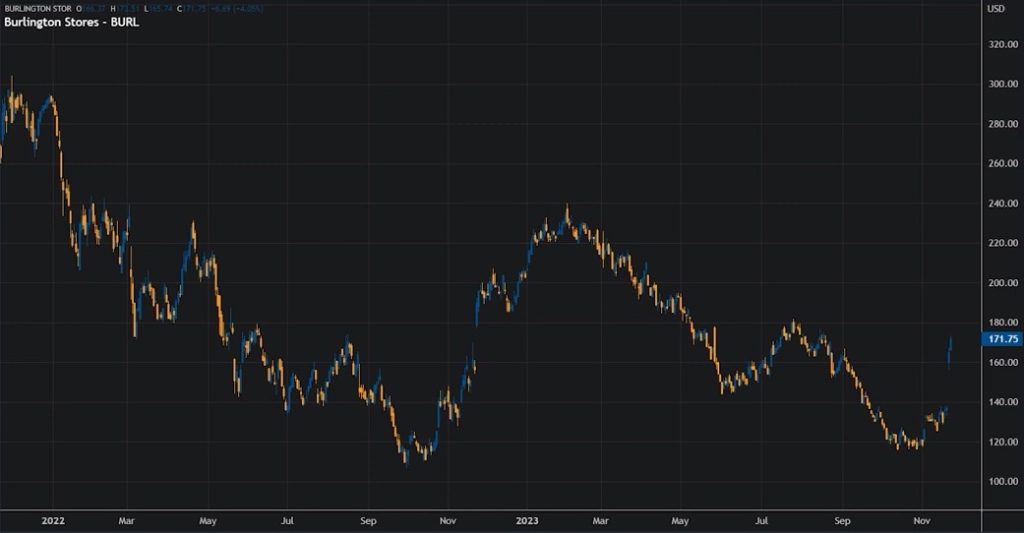Happy Thanksgiving! As we’re almost done with earnings season and the broader indices are near yearly highs, I want to talk about an interesting trade setup. The latest CPI report has pushed markets up, signaling lower inflation.

This has lowered the ten-year yield, which peaked at 5% a month ago and now hovers around 4.4%. Consequently, all U.S. indices have rallied. This shift should benefit small-cap stocks.

Many thought higher borrowing costs would hurt small caps, and they have, relatively. However, since the November CPI report, small caps have shown strength. The Russell ETF is up about five and a half percent, while the S&P cues are only up about 3%.
This relative strength suggests that if rates stay low or trend lower, small caps could rally significantly into 2024. Even if the broader market rallies 10% to 20%, small caps might perform even better this time around.

You can check the options market. There’s been a lot of buying of upside calls in the IWM, whether by hedge funds or trading desks, it’s hard to say. Given the valuation differences between big caps and small caps, big names like Navidi and Mehta might also rally, but probably not as much. If the S&P hits 5000, these names might perform at a market level. However, if that happens, we could see a broader rally, with the laggards moving significantly higher.

Take Burlington, for example. It was down 40% this year but rallied 20% after reporting earnings in line with expectations. It’s still down 20% for the year, trailing the S&P by about 40%. But there might be some catch-up potential here. Other names like Gap Stores have also seen significant gains recently. I believe these beaten-down stocks in the small-cap sector could outperform in the coming months.
If we reach or surpass the 5000 level this time, I think small caps are poised to outperform. A 10% rally could easily translate into a 20% rally in the IWM due to the earlier mentioned call buying. When these stocks start moving, they can move quickly and aggressively due to gamma hedging.
And if we got a 20% move in IWM, you could easily find individual names that could be up 50 to 100%. Kind of like I’ve already mentioned. I would look to names in the sector that are making money that have low expectations and lower piece. You remember, it’s always easy to be low expectations. One narrow change can turn things around quickly, especially if you can identify catalysts.

Especially in non-tech areas, given the strength of tech this year, a name worth noting is the Geo Group, ticker GEO. It’s a small cap company with a market cap of around $1.2 billion.
About six years ago, the stock was trading above $30, but now it’s below $10. Geo Group operates in a seemingly recession-proof sector: prisons. It manages jails and detention centers, which might perform better during a recession. Its largest customer is ICE, accounting for 44% of its revenue.
ICE is a significant catalyst, yet the market is still overlooking it, mainly the border crisis. The U.S.-Mexico border situation is widely recognized as chaotic, and people are becoming increasingly aware of it. In January, the Republican House will attempt to pass a bill related to border security, which could significantly impact the stock.
The polls are starting to factor in a Republican victory, especially if Trump wins. Regardless of your opinion on him, the market reacts strongly to this. Even if not, I believe U.S. citizens will demand better border security, and Biden will have to appear tougher on the border in an election year. Consider this.
What if there’s a terrorist attack in the U.S.? Given the current geopolitical risks and the lenient border policy, if that were to happen, these border crossers and immigrants would be immediately rounded up and housed somewhere. Where would that be? Well, obviously, GEO would benefit from that.
Even if none of these scenarios unfold, this deeply discounted stock could easily rise to $15, with catalysts like a broader market rally. Why not $20 or more? You could invest in March $10 calls for about $0.80, giving you around four months for this investment to pay off. If the stock reaches $15, you’d have a risk-reward ratio of over 5 to 1.
If it reaches $20, your ratio would be 11 and a half to one. So, keep in mind, sometimes investing in controversial areas like this can be profitable. Even if you’re pessimistic, there are affordable ways to benefit from potential market upswings. Look for those opportunities. Happy Thanksgiving from Raj Malhotra. On the other side.












